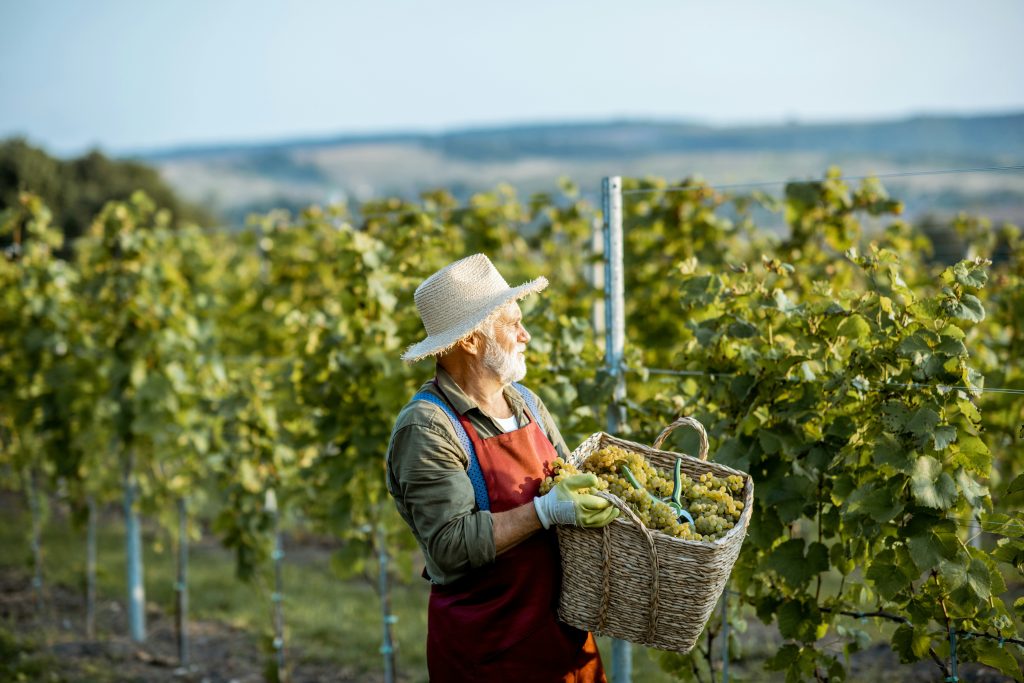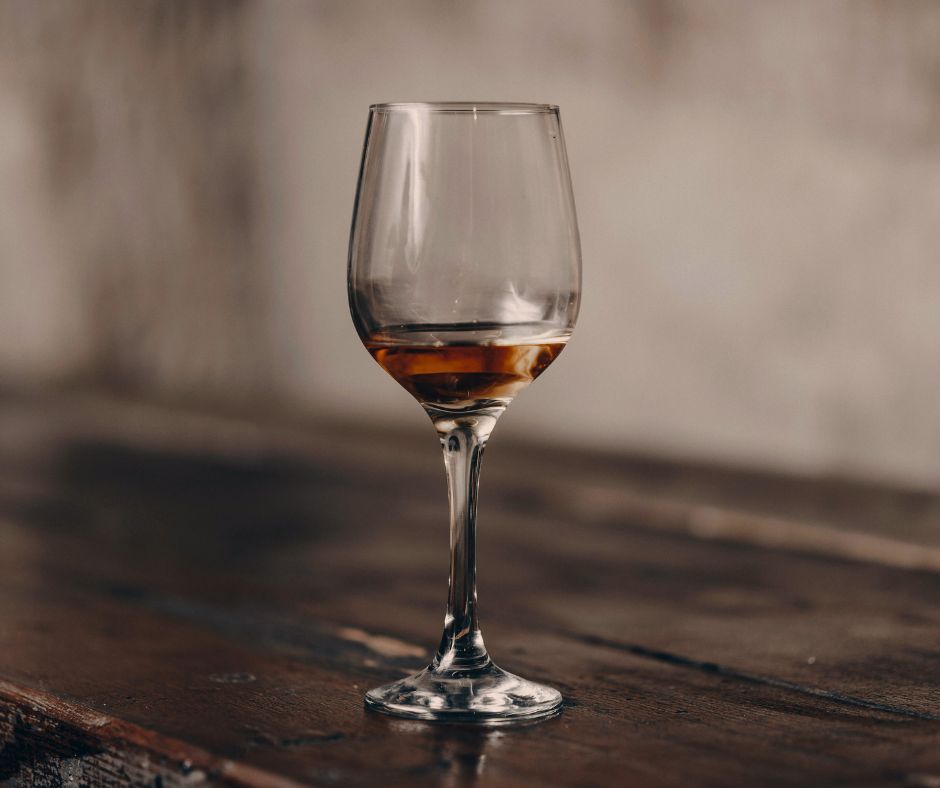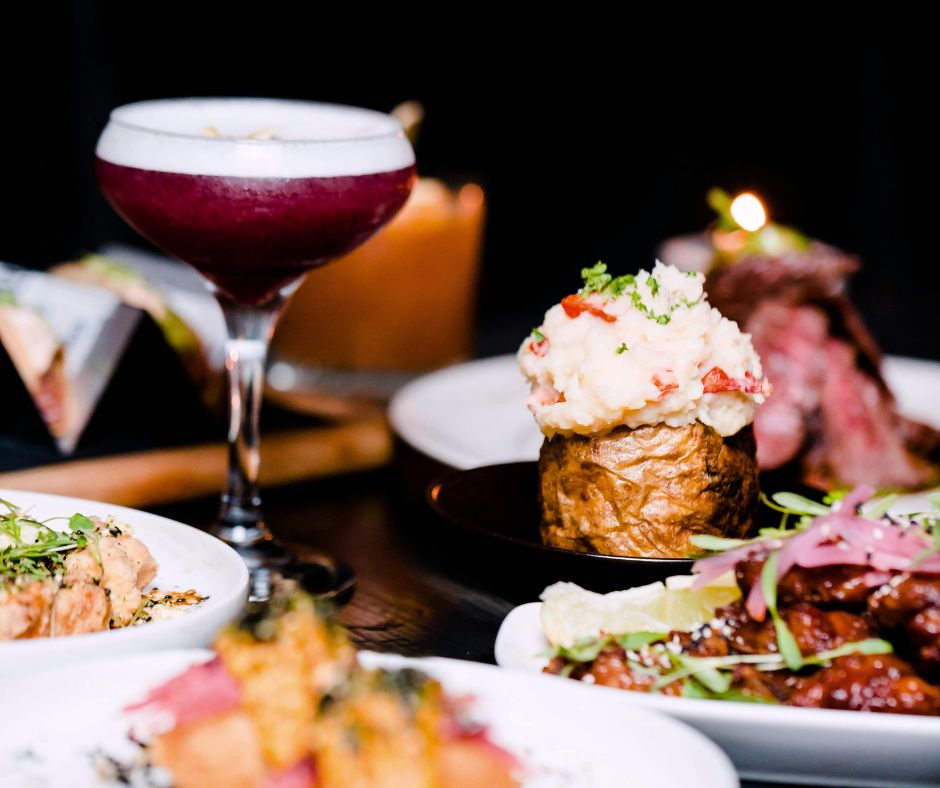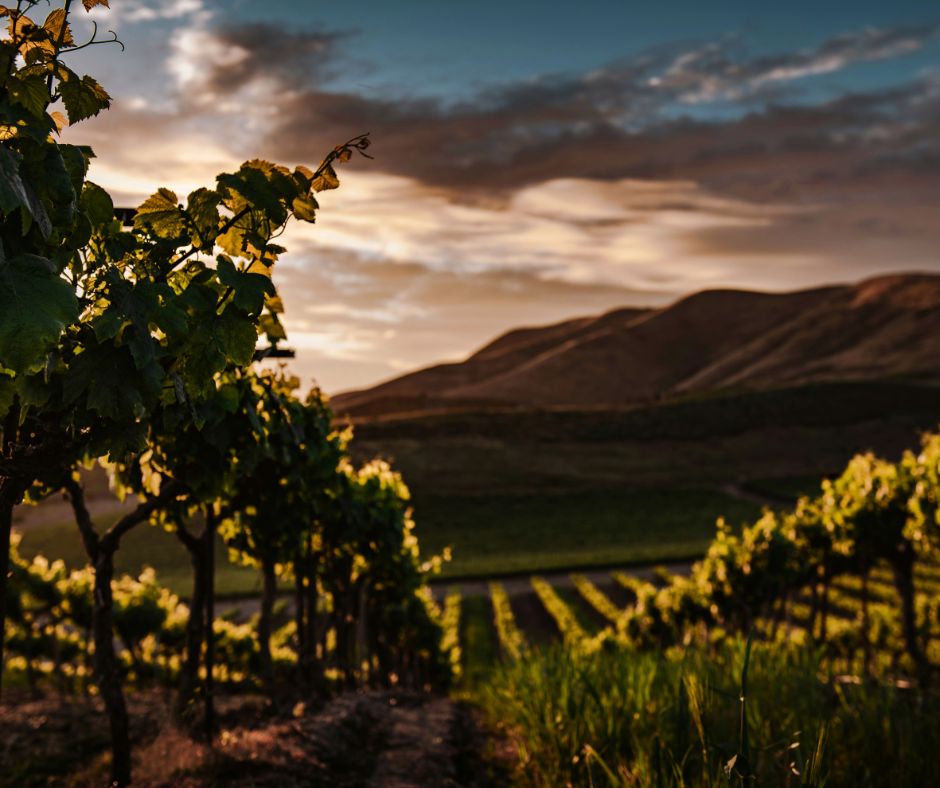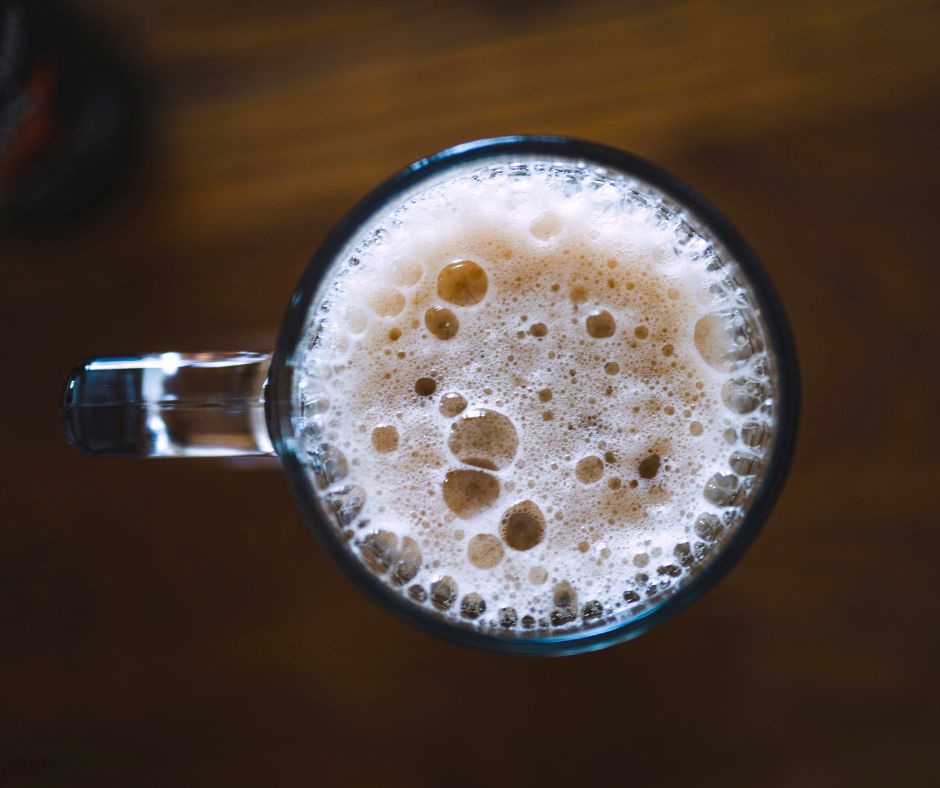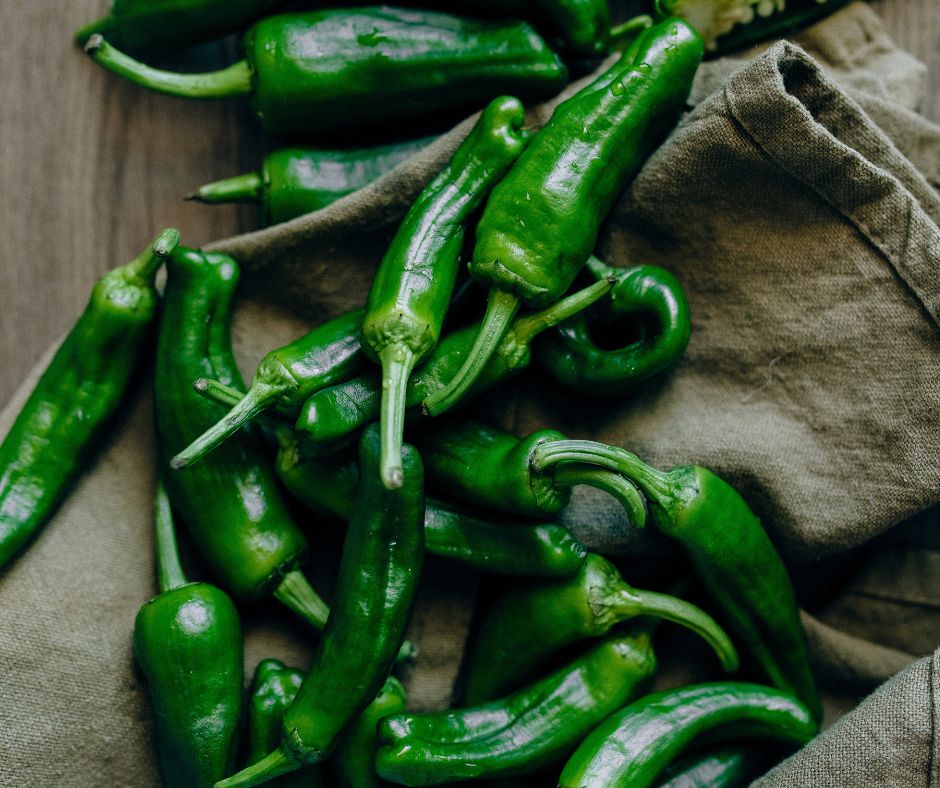At PAIRABLE™, we love obsessing over perfect pairings — but where does that perfect glass of wine even begin? Turns out, every sip is the end result of thousands of tiny decisions, shaped by nature, science, and a bit of winemaking artistry. Let’s uncork the full story, from grape to glass.
It All Starts with the Grape – More Than Just Fruit
Step 1: Grapes and their Typicity
Before we talk terroir, let’s meet the grapes themselves.
Not all grapes are created equal — each variety has its own typicity, a signature combination of flavors, aromas, and structural traits that make it recognizable. Interestingly, wine almost never tastes like actual grapes; instead, it expresses flavors more like other fruits.
These fruit flavors can be bold and upfront or subtle and evolving as you move from ‘on the nose’ (aroma) to ‘on the palate’ (taste). Beyond fruit, wines often reveal floral, mineral, spice, herb, or vegetal notes — key clues when identifying specific grape varieties. On top of that, wines may also carry savory, microbiological, or even chemical nuances, which can be naturally present in the grape or drawn out by the winemaker’s techniques.
The Key Players in Wine Grape Typicity:
- Acidity: The refreshing zip you taste — think lemon in Sauvignon Blanc or cranberry in Pinot Noir.
- Tannins: These are found in the skins, stems, and seeds, giving reds their drying grip (Cabernet Sauvignon is famous for this).
- Alcohol: Created from sugar during fermentation — wines from hotter regions tend to have more alcohol (hello, Australian Shiraz).
- Body: The overall “weight” of the wine — from light and crisp to rich and velvety.
- Residual Sugar: How much sugar is left unfermented — from bone-dry to dessert-level sweet.
Each grape variety balances these in its own way — Riesling tends to be high-acid and lower-alcohol, while Zinfandel often leans rich and ripe with bold alcohol and soft tannins.
Step 2: Terroir & The Vineyard – Nature Sets the Stage
Now that we know the grapes, let’s talk about where they live. Terroir — that famous French term — refers to the entire environmental fingerprint that shapes a grape’s flavor. Terroir is a sense of place it results in a Cabernet Sauvignon tasting different when grown in Bordeaux’s left bank or Napa Valley’s diverse terrain. The French attempted to stifle competition by using terroir as an unreproducible factor that they claimed was their advantage but wine makers and consumers have discover the joy of terroirs the world over that can shape great wine.
- Soil: Chalky limestone? Sandy loam? Volcanic rock? Each adds unique minerality and drainage properties.
- Climate: Cool climate grapes (like Pinot Noir) need gentle warmth; heat-loving grapes (like Grenache) thrive in the sun.
- Topography: Slope, elevation, proximity to water — all influence temperature and ripening.
GDD tracks how much heat a grapevine gets during the growing season. Certain grapes need more or less heat to fully ripen. For example:
- Pinot Noir: ~1200-1600 GDD (cool climate specialist)
- Cabernet Sauvignon: ~1700-2300 GDD (warmer climate grape)
- Syrah/Shiraz: ~2200+ GDD (heat-loving)
Planting the right grape in the right place is winemaking’s first (and maybe most important) pairing.
Step 3: Harvest – Timing the Perfect Pick
Once the grapes hit their ideal ripeness, it’s go-time. Winemakers measure sugar levels (Brix) to decide when to pick. Typical wine grapes have about 22-28% sugar at harvest, and during fermentation, roughly 60% of that sugar converts into alcohol.
22% Brix = ~13% alcohol (for a fresh white wine)
28% Brix = ~16% alcohol (for a powerful red)
Too early, and the wine is thin and sour. Too late, and you’re making a raisin smoothie. Timing matters, and harvest windows are sometimes just a few days long.
Harvest can be romantic (hand-picked at sunrise) or efficient (machine-harvested overnight to keep grapes cool). Either way, this is the moment when nature hands the baton to the winemaker.
Step 4: Crush, Press & Fermentation – Turning Sugar Into Booze
After harvest, grapes head to the winery for their transformation. The process looks a bit different for reds and whites:
- White Wines: Grapes are pressed right away, separating juice from skins.
- Red Wines: Grapes are crushed, not pressed — skins and juice ferment together to extract color, tannins, and flavor.
Ancient practices like foot treading to crush the grapes are dying off, though still practiced in some regions and modern mechanical devices are often used to split open the grape, let the juice start to flow and the magic of fermentation to begin.
Next comes fermentation — the magical moment when yeast eats sugar and produces alcohol and CO₂. Grapes were fermented into wine for centuries before the process was scientifically understood. Louis Pasteur, known for is work in biology was a pioneer in helping to understand the real efforts in fermentation. The process can take days (for crisp whites) or weeks (for complex reds), and the winemaker can choose:
- Native yeast (naturally present on the grapes) for a sense of place.
- Cultured yeast for reliable results.
The temperature and time spent fermenting shape the final flavor — cooler temps preserve fruity aromas; warmer temps pull out deeper tannins and texture.
Step 5: Aging & Refinement – Building Character
Fermentation creates a raw, newborn wine — but aging turns it into something polished and pairable. Aging vessels play a huge role in shaping style:
- Stainless Steel: Keeps things fresh, bright, and focused. They are inert and as such impart little to any flavors into the wine.
- Concrete/Clay: Adds subtle texture without strong flavors and harkens back to ancient days and practices.
- Oak Barrels: Introduces aromas like vanilla, toast, and spice, along with micro-oxygenation that softens tannins. Some oak barrels are small (approx. 300 bottles) while others are room sized vats line up in rows.
Malolactic Conversion (aka Malo)
Many wines (most reds and some Chardonnays) also undergo a secondary process where sharper malic acid (think green apples) converts into lactic acid (think cream). This smooths out texture and adds richness.
Step 6: Blending & Bottling – The Final Touches
Few wines come from a single tank or barrel — most are blended to balance acidity, alcohol, tannin, and flavor. Winemakers might mix grapes from:
- Different vineyard plots
- Different fermentation vessels
- Even different grape varieties
Once the blend is perfected, wines are often clarified to remove sediment using fining agents or filtration or sometimes just racking the juice between barrels leaving the sediments behind. The are then blended and bottled. Some wines, more reds than whites, rest in the bottle for months or years before release, developing even further complexity.
What About Sparkling, Rosé, or Orange Wines?
- Sparkling: After primary fermentation, wine gets bottled with a little extra yeast and sugar — this triggers a second fermentation inside the bottle, trapping bubbles. And there are different sparkling wine methods, each producing bubbles of different size and intensity
- Rosé: Juice from red wine grapes spends just a few hours (not days) in contact with grape skins — enough to bleach a little color and get that gorgeous pink glow.
- Orange Wine: White grapes get the red wine treatment, fermenting with their skins for bold flavor, texture, and color. Orange wines with their unique flavor profiles are both an acquired taste and a popular novelty.
Why This Matters for Pairing
Knowing how a wine is made helps you understand how it will behave on your palate. A cool-climate, steel-aged Sauvignon Blanc will cut through rich foods with zippy acidity. A barrel-aged Syrah brings smoky notes that match grilled meats. That’s the magic of understanding the process behind the pour — you become a smarter, more confident pairer.
Ready to see how this all comes together at your next dinner?
Fire up PAIRABLE™ and let Aiza match your plate to the perfect bottle — with all the backstory to make you the smartest person at the table.


